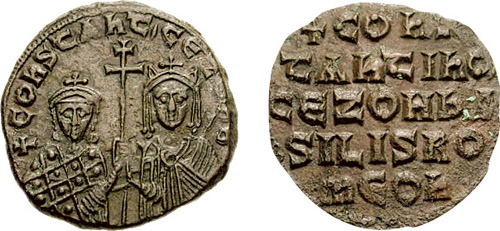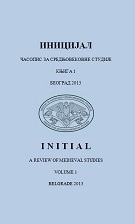
A palace revolt foiled the scheme, which looked like a betrayal of Byzantium to the Bulgarians. The patriarch Nicholas, who became regent, found it expedient to appease the powerful tsar Simeon I of Bulgaria-who had severely defeated the Byzantine armies and coveted the Byzantine imperial crown-by promising that the child emperor would marry Simeon's daughter. But, on the death of his father in 912, the succession fell to his uncle Alexander, whose death the next year cleared the way for seven-year-old Constantine. As the infant was Leo's only male offspring, he had to be accepted and, in 911, was proclaimed coemperor. It was Leo's fourth marriage, and the Greek church normally forbade a widower to remarry more than once. His mother was Zoë Carbonopsina, the mistress of his father, Leo VI, who married her shortly after Constantine was born, against the bitter opposition of the patriarch Nicholas Mysticus.


His De administrando imperio treated the Slavic and Turkic peoples, and the De ceremoniis aulae Byzantinae, his longest book, described the elaborate ceremonies that made the Byzantine emperors priestly symbols of the state.Ĭonstantine's surname, Porphyrogenitus (that is, born in the Purple Chamber of the Imperial Palace in Constantinople, as befitted legitimate children of reigning emperors), pointedly answers the doubts expressed about the legitimacy of his birth in 905, which slowed down his career and contributed to his shyness. His writings are one of the best sources of information on the Byzantine Empire and neighbouring areas. Also called CONSTANTINE VII FLAVIUS PORPHYROGENITUS, Byzantine emperor from 913 to 959.


 0 kommentar(er)
0 kommentar(er)
